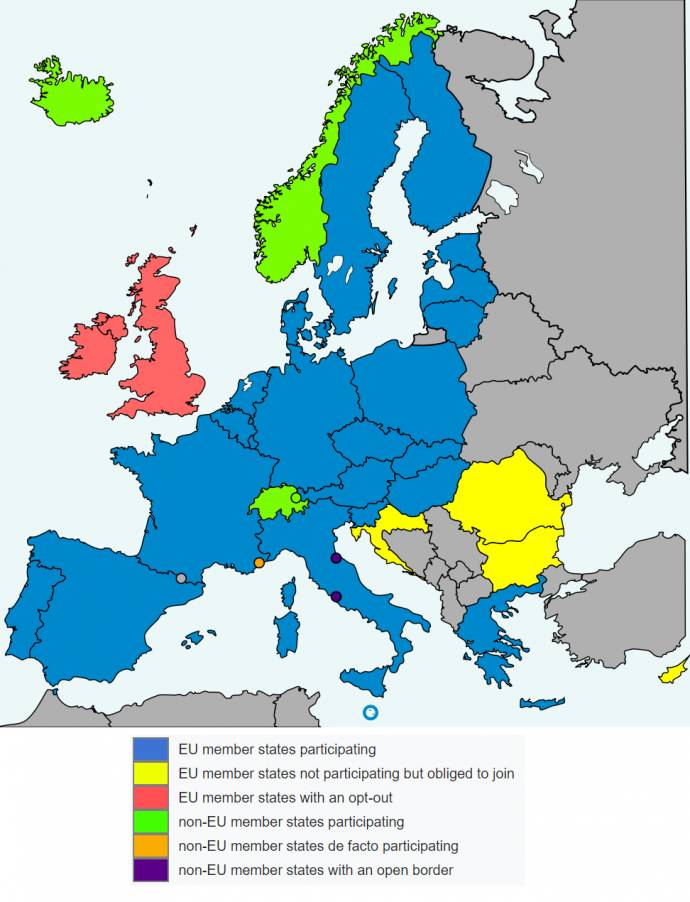Šefic warned that the number of migrants crossing Turkey and Greece to get to Western Europe was growing again, although it remains far below the 13,000 that used to arrive on Greek islands daily at the peak of the migration crisis in 2015.
While the migrants are using several Balkan routes, the one through Albania, Montenegro, Bosnia and Croatia is particularly problematic, and this is where the EU's border agency Frontex could do more, he said.
The Interior Ministry estimates there are 45,000-60,000 migrants in the region at the moment, with the majority trying to get at least as far as Slovenia and hence the Schengen zone.
"About 80% of all who tried to illegally cross our border ask for international protection, not least because even if they interrupt the procedure and head to a different country and are returned, they are still in the Schengen zone. This is very problematic," he said.
Nevertheless, Slovenia is still not a target country, as a high share of migrants leave after formally requesting international protection and many leave even before they make the request. Such people are then processed in line with the aliens act and returned to Croatia.
Another difficulty for Slovenia is that Serbia has introduced visa liberalization with Iran and several African countries. "This means these people get to Serbia perfectly legally," he said, noting that a similarly legal route leads from Turkey into Bosnia.
Šefic believes the Commission should react, in particular in the accession process. "If it is true that Serbia plans visa liberalization with Syria and some North African countries, this is a major problem."
As a result, the nationality structure of migrants has changed. "We used to talk about Syrians, who undoubtedly deserved international protection, but now it is mostly Algerians, Moroccans and Pakistanis coming," he said.
Slovenian police are currently recording about 50 arrivals per day, which is "too much and bothers us very much. The external EU border is essential, that is where migrations should be stopped and processed."
This means that countries including Greece, Bulgaria, Romania, Hungary and Croatia should protect the border.
Šefic expects a lot from a meeting of police commissioners from the region during a conference in Slovenia next week. He said several specific measures will be proposed and would then be examined by Salzburg Forum interior ministers in Bucharest on 14 and 15 June.
But he also pointed out that Slovenia was very successful, as "neither Austria nor Italy have seen illegal border crossings," with Austria catching fewer than ten this year.
While the Austrian authorities acknowledge Slovenia is doing a good job, senior representatives have announced stricter measures on the border.
"Austria says that if the border is 'penetrated' it would take measures - just like we have because the Croatian-Bosnian border is permeable. It is in the interest of both Austria and Slovenia to stop the flow and keep things under control," Šefic said.
As for the fence on the border with Croatia, Šefic said such "temporary technical barriers" were "effective and yield results". Additional fencing will be installed at several more points, in particular on the banks of the Kolpa river.

Interior Ministry State Secretary Boštjan Šefic. Source: vlada,si
But he stressed that the fence itself cannot stop migrations. Not only are more officers needed as well, migrations need to be "tackled where they occur: at the beginning of migration routes."
Moreover, Slovenia needs a strategy for dealing with migrations.
"Some say we can accept 50,000 people, others demand that we do not accept a single person. Neither position is realistic ... and neither side have provided clear answers as to how to do it."
"And there is no answer to what happens when a wave may reach us. There is no fence to hold back 100,000 or 200,000 people. What is the alternative? Will we shoot? We probably don't want that," he said.
Šefic also stressed that the security situation in Slovenia was good and police are "currently fully in control" and doing their job well.
There have not been major security incidents involving migrants, except two cases of severe bodily harm at Rog, an abandoned factory in Ljubljana that is now a squat.
However, he said there were nevertheless certain risks. "People who are either without status or are trying to exploit the asylum system and are not interested in getting asylum are a certain risk."
He also indicated that procedures to vet asylum applicants were too long, with too many ways to seek recourse. "We wanted to tighten certain things but this was not adopted in parliament," he said, arguing that "efficiency of procedure could prevent some attempts at illegal crossing of the border."






